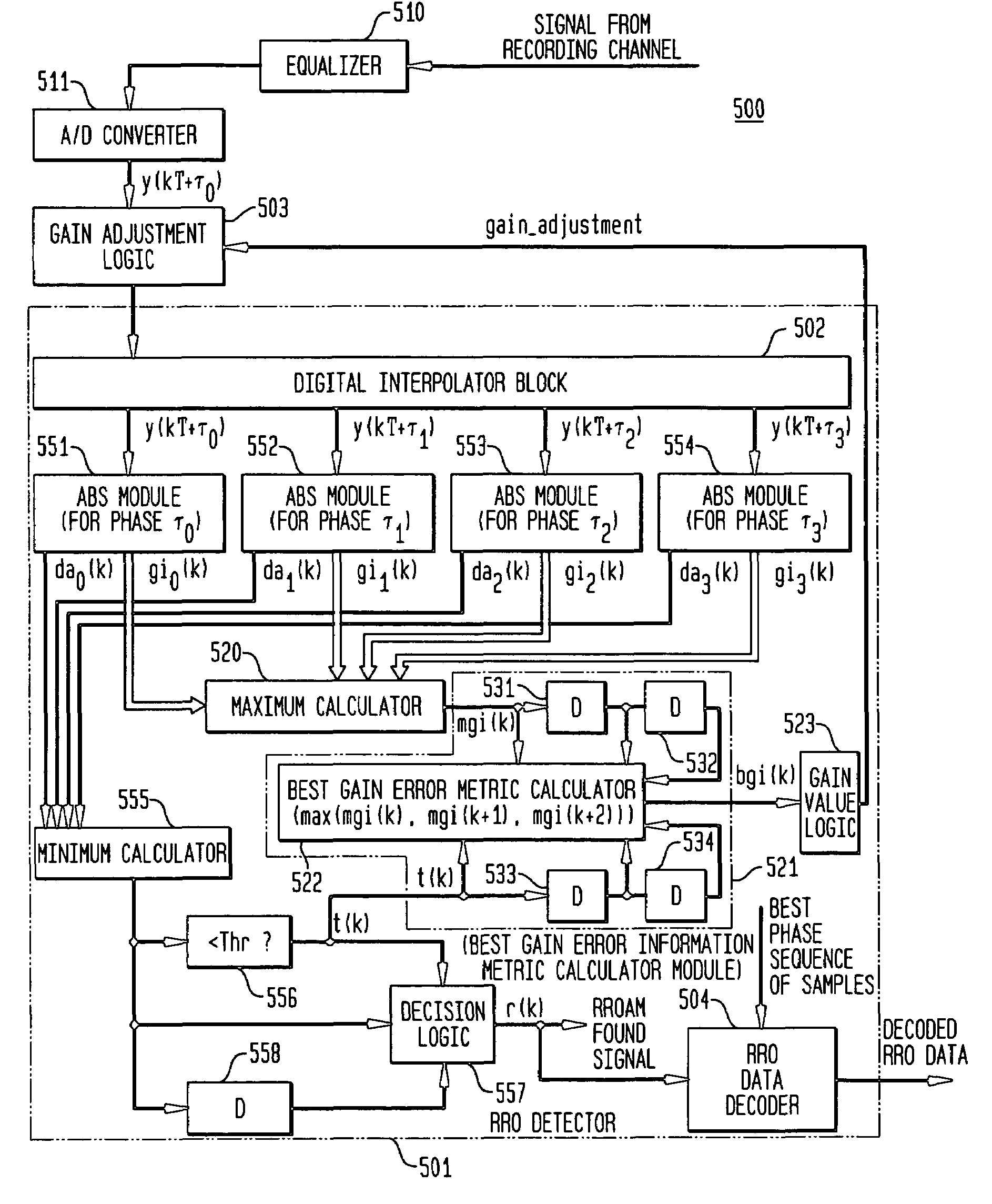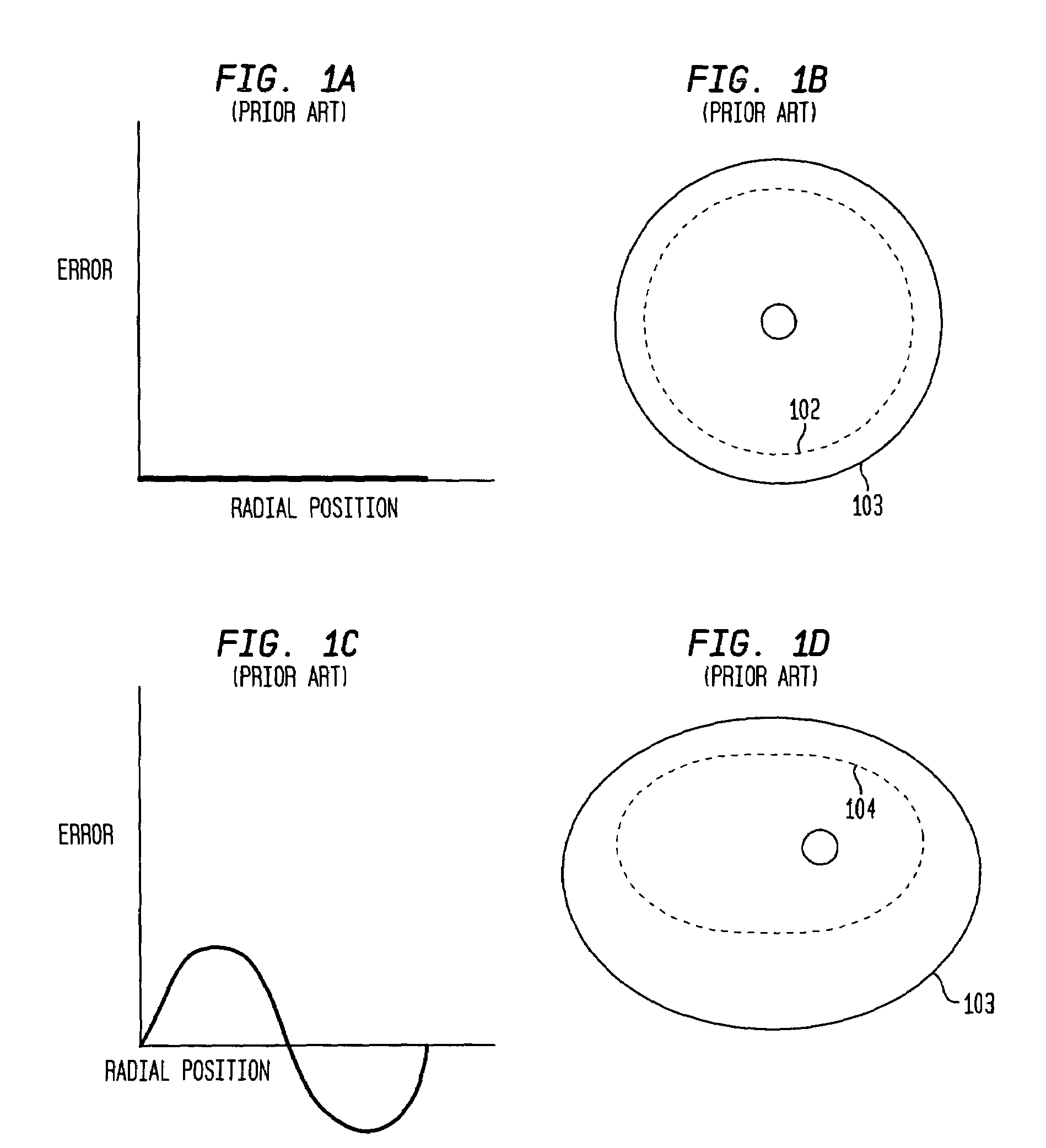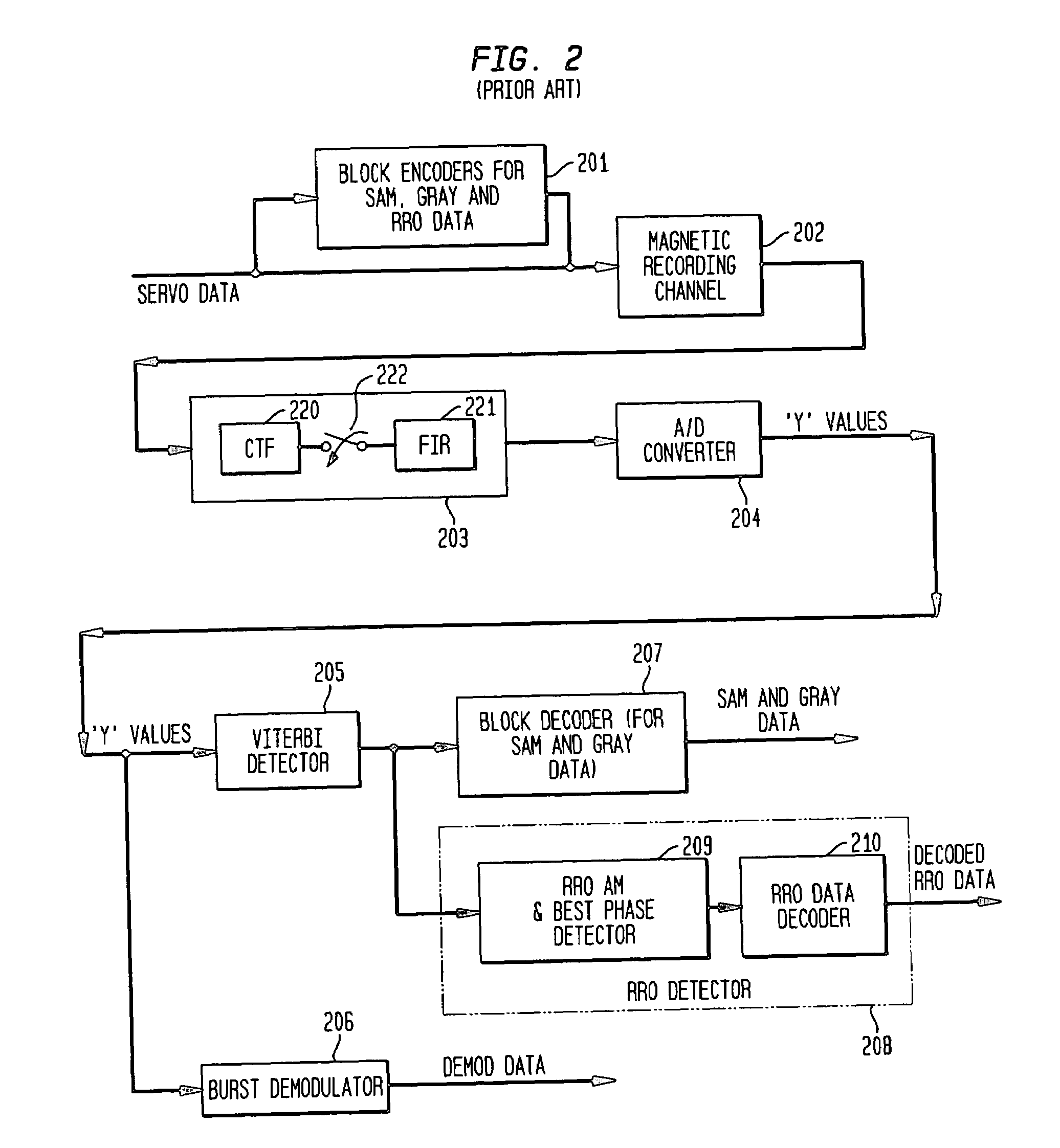Detection of recorded data employing interpolation with gain compensation
a technology of gain compensation and recorded data, applied in the field of data detection in a communications system, can solve the problems of unfavorable data acquisition, unfavorable data acquisition, and inaccurate reading of servo information by the head,
- Summary
- Abstract
- Description
- Claims
- Application Information
AI Technical Summary
Benefits of technology
Problems solved by technology
Method used
Image
Examples
Embodiment Construction
[0034]In accordance with exemplary embodiments of the present invention, a repeatable run out (RRO) detector of a receiver generates a gain adjustment value to compensate for variations in gain of an asynchronously sampled signal including RRO data. The receiver employs interpolation of the asynchronous sample sequence and generates gain estimates for both the asynchronous sample sequence and one or more interpolated sample sequences. The RRO detector selects best phase samples from the asynchronous sample sequence and one or more interpolated sample sequences to detect the RRO data. The RRO detector also generates a gain compensation value from the gain estimates for the best phase samples. Gain compensation values for several RRO data detection events are combined to generate a gain adjustment value. The gain adjustment value is then employed to adjust subsequent asynchronous sample sequences to improve RRO detection performance.
[0035]While the present invention is described for d...
PUM
| Property | Measurement | Unit |
|---|---|---|
| distance | aaaaa | aaaaa |
| distance measure | aaaaa | aaaaa |
| threshold | aaaaa | aaaaa |
Abstract
Description
Claims
Application Information
 Login to View More
Login to View More - R&D
- Intellectual Property
- Life Sciences
- Materials
- Tech Scout
- Unparalleled Data Quality
- Higher Quality Content
- 60% Fewer Hallucinations
Browse by: Latest US Patents, China's latest patents, Technical Efficacy Thesaurus, Application Domain, Technology Topic, Popular Technical Reports.
© 2025 PatSnap. All rights reserved.Legal|Privacy policy|Modern Slavery Act Transparency Statement|Sitemap|About US| Contact US: help@patsnap.com



